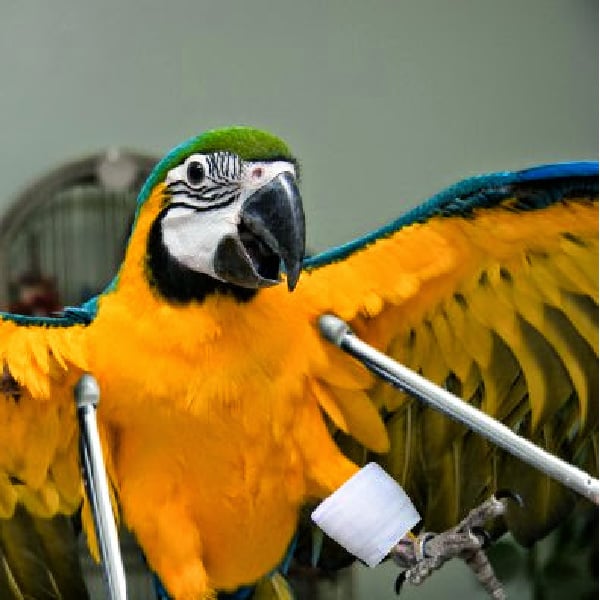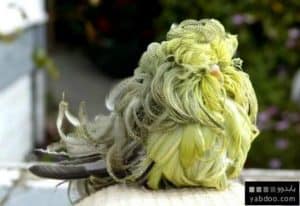Last Updated on by Catherine Tobsing
We’re going to break down the first aid thing into several manageable parts. Before we do here’s a pop quiz: What was the cashier at Walgreens thinking when I bought Pedialyte, saline, eyewash, plastic gloves & a tube of KY Jelly?
As an example, you really need needle-nose pliers to pull out a blood feather from a Blue and Gold Macaw, but only strong tweezers for a smaller bird like a parakeet.
Everyone likes to think of themselves as being prepared for a disaster and certainly life’s cuts and scrapes. I have personally sutured a dog in a garage (after 5 minutes of training by my vet 🙂 I have yanked shards of glass out of more than one dog’s paw and got them bandaged over the years.
Sutures are easy to come by if your vet is a fellow musher but for the most part, most dogs, and I presume cat medical emergencies, can be treated with a human first aid kit. Pulling out a little fur left on the dog in the haste to get a wound bandaged, is something a dog will get over pretty quickly.
It’s also important to note that a Bird First Aid Kit is really there to help either stabilize a bird in an emergency or be able to begin the healing process for a minor injury. As a rule of thumb, if you think for a second, that your bird needs veterinary care – it does!
By now you’re asking yourself the nagging question. “Do I really need all this stuff, what could possibly happen to my bird?” Well, we thought of that too.
Here’s our list of 41 ways we kill or injure our pet birds – additions are welcome.
Let’s start with the basics. Do you have all the necessary phone numbers in an easily accessible area like your refrigerator? You’ll want emergency veterinary numbers and perhaps even directions to the vet clinic. How about the ASPCA Animal Poison Control Center at 888-426-4435 (A $65 consultation fee may apply). Yep, we’ll be talking about poisons and poison control in the near future.
Next, the first of many reasons is that birds are different than cats and dogs when experiencing even the smallest of medical trauma. As an example, let’s say a bird gets its leg band caught in a bird cage accessory breaking its tibiotarsal (shin bone). In this scenario, a bird has a higher chance of dying from stress than from the injury itself. This is why you will want to stabilize the bird before tending to the injury.
Get them restrained with a towel and begin to talk softly and calmly. Orthopedic injuries usually aren’t life-threatening so work on the stabilization of the bird first, something called “re-establishing homeostasis” in veterinary terms.
A note about bird bones
We know that bird bones are hollow, enabling them to fly but what you might not know is these hollow bones are considered “pneumatic” bones that contain air-filled canals that aid in the respiratory cycle during flight.
A note about bird skin
A bird’s skin is much more delicate and thinner than mammal skin and far less elastic. The skin is secured firmly to the bird’s bones, especially in the two highly mechanical areas, the wings & feet.
The top layer of skin, the dermis holds smooth muscles and feather follicles which is how a bird determines the position of its feathers. The tissue beneath the skin, (the subcutis) is made up of fat, striated muscles, and connective tissue
A broken bone is usually visible, a fracture sometimes can only be determined with an x-ray. If your bird experiences a broken bone and your Bird First Aid Kit is still on the shopping list you can resort to the Mitch-Guyver method of treating avian orthopedic injuries.
A feather quill, cut from a flight feather can serve as a splint and can be wrapped with masking tape. If you have done your homework and built at least the basic kit, you’ll have some wooden coffee stir sticks for a splint and a roll of nonadhesive bandage for wrapping the splint to the leg, stabilizing the bird until veterinary treatment can be had.
Falconry Feathered Factoid
Falconer’s “imp” wings keep the bird’s feathers in perfect shape when a feather breaks. Imping has been around for several thousand years. Originally done with steel pins and vinegar (causing the steel pins to corrode binding the two halves of the feather repair) but now done with bamboo or the shafts of smaller feathers and of course – super glue.
You can see why we’re going to bust this First Aid thing into a bunch of different parts, but we’re hoping you feel the conversation will be worth it.
Written by Mitch Rezman
Approved by Catherine Tobsing
Author Profile
Latest entries
 The Traveling BirdJune 26, 2025Can You Name 5 Parrot Species That Are Living Wild in the USA?
The Traveling BirdJune 26, 2025Can You Name 5 Parrot Species That Are Living Wild in the USA? Bird BehaviorJune 26, 2025How is it Parrots Are Problem Solvers Social Animals and Even Use Tools?
Bird BehaviorJune 26, 2025How is it Parrots Are Problem Solvers Social Animals and Even Use Tools? Bird & Parrot AnatomyJune 25, 2025How a Tiny Chemical Modification Makes Parrots Nature’s Living Paintings
Bird & Parrot AnatomyJune 25, 2025How a Tiny Chemical Modification Makes Parrots Nature’s Living Paintings PigeonsJune 20, 2025How Do Parrots Thrive in Cities Outside Their Native Habitats?
PigeonsJune 20, 2025How Do Parrots Thrive in Cities Outside Their Native Habitats?




